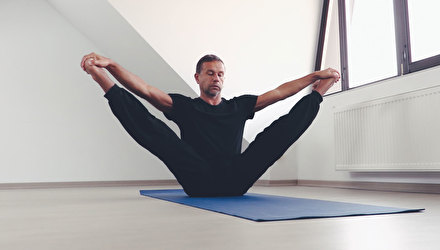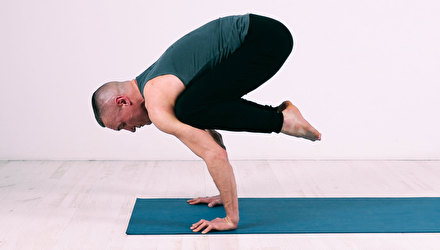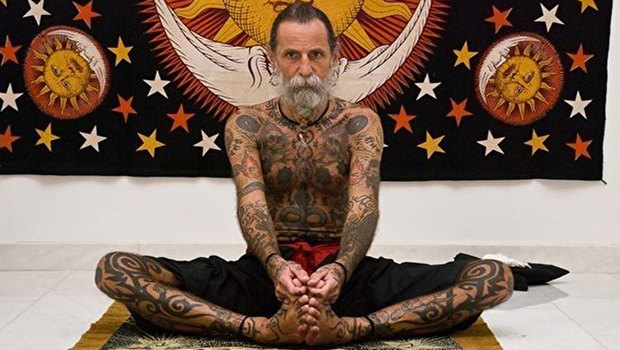Название асаны пошло от слов «эка» - один, «пада» - нога или стопа, «капота» - горлица или голубь. Раджакапота - это царь голубей. В этой асане грудь выпячивается вперед, как у голубя, отсюда название.
Правила выполнения (Айенгар, Йога Дипика):
1. Сесть на пол, ноги вытянуть перед собой.
2. Согнуть правое колено и положить правую стопу на пол так, чтобы правая пятка касалась левого паха. Правое колено держать на полу.
3. Левую ногу отвести назад и выпрямить ее во всю длину на полу. Передняя поверхность левого бедра, колена и голени, а также верхняя часть пальцев левой стопы должны касаться пола.
4. Положить ладони на талию, выпятить грудь вперед, вытянуть шею, откинуть голову как можно дальше назад и задержаться на некоторое время в этом подготовительном положении.
5. Затем положить ладони на пол впереди, согнуть левую ногу в колене и поднять левую стопу вверх к голове. Левая нога от колена до лодыжки должна быть перпендикулярна полу. Чтобы достигнуть этого, нужно напрячь мышцы левого бедра.
6. С выдохом отвести правую руку за голову и ухватиться кистью за левую стопу. Сделать несколько дыханий. Затем опять выдохнуть и захватить кистью левой руки левую стопу. Положить голову на левую стопу.
7. Выпятить грудь вперед, отвести руки еще дальше вниз, захватить левую лодыжку и опустить голову настолько, чтобы верхняя губа касалась левой пятки (Фото 542). Оставаться в этой позе около 10 секунд. Так как грудь полностью расширена, а живот сжат, дыхание будет частым. Стараться дышать нормально.
8. Освободить левую лодыжку, отнимая кисти поочередно, и поместить ладони на пол. Выпрямить и перенести вперед левую ногу, затем выпрямить правую.
9. Повторить позу в другую сторону с той же длительностью. Левую стопу подтянуть к правому паху, правую ногу вытянуть назад и ухватив» Кистями обеих рук стопу правой ноги за головой.

Эффект:
Асана особенно полезна при нарушениях в мочеполовой сфере, поскольку именно в этом отделе значительно улучшается кровообращение при ее выполнении. Развивается гибкость позвоночника. Существенно влияние на железы внутренней секреции: щитовидная, паращитовидные, поджелудочная железы, а также половые железы (как мужские, так и женские) значительно лучше функционируют при регулярном выполении асаны.








